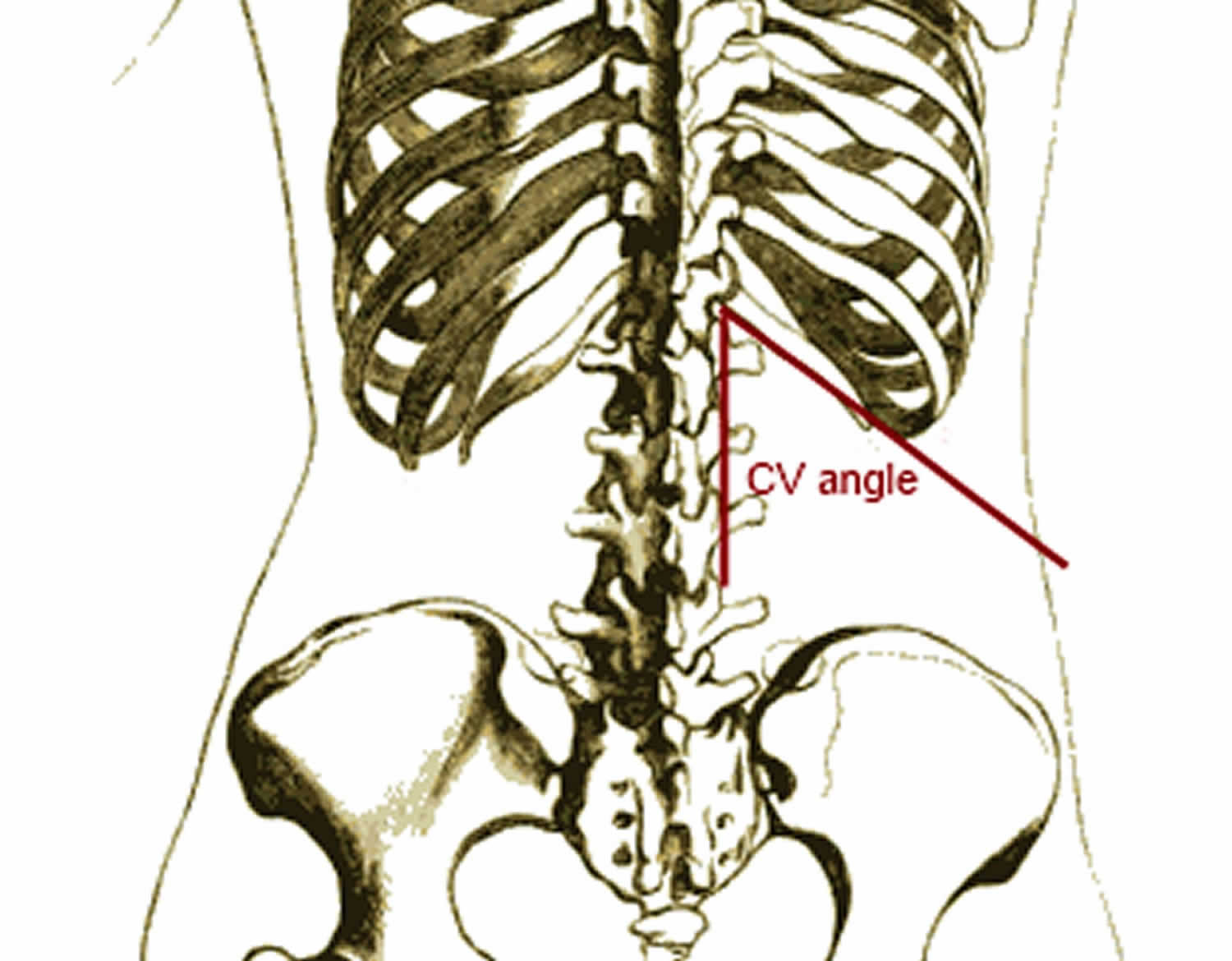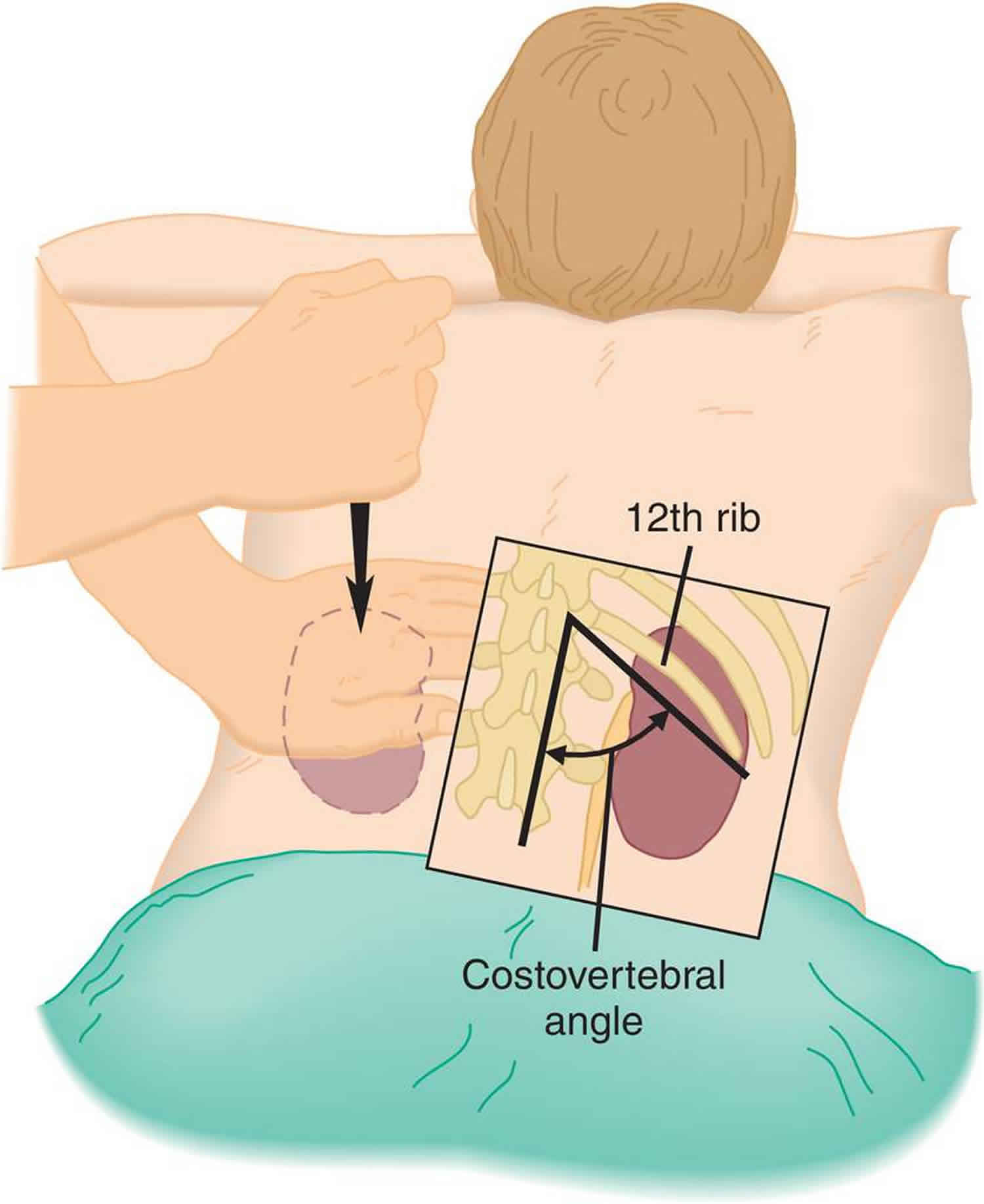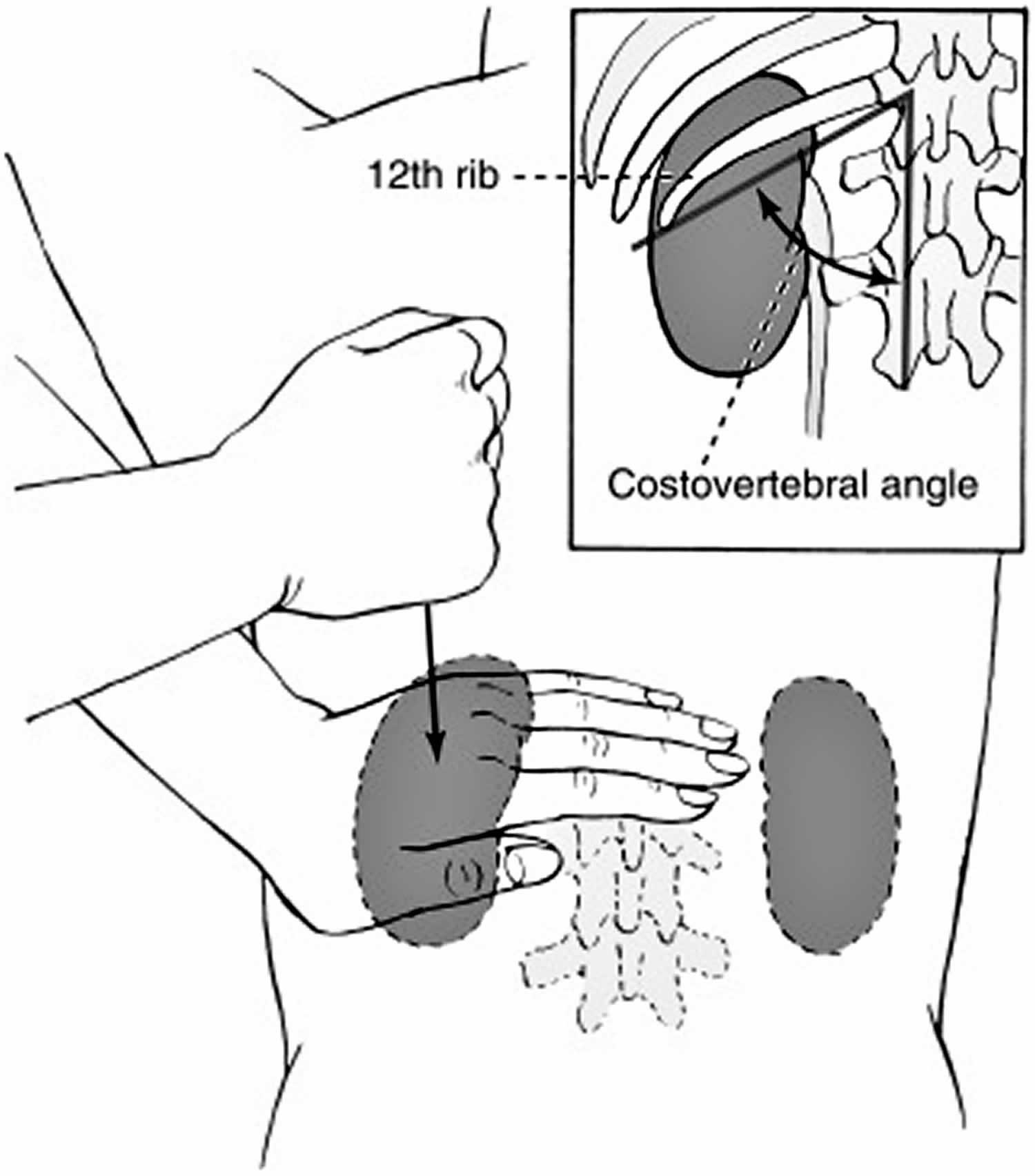Costovertebral angle
Costovertebral angle is the acute angle formed on either side of the human back between the twelfth rib and the vertebral column. The kidney lies directly below this area, so is the place where, with percussion, pain is elicited when the person has kidney stones or kidney inflammation. The presence of pain is marked as a positive Murphy’s punch sign or as costovertebral angle tenderness.
Figure 1. Costovertebral angle percussion
Costovertebral angle tenderness
Costovertebral angle tenderness also known as costovertebral angle pain.
Costovertebral angle tenderness test
Costovertebral angle percussion also known as Murphy’s percussion test or Murphy’s punch sign, is used to rule out kidney involvement or pseudorenal pain. When performing this percussion test the patient can either be in prone or sitting. The examiner places one hand over the costovertebral angle of the patient’s back. Next, the examiner provides a percussive thump with the other hand, allowing the kidney to vibrate. A positive test is noted by either costovertebral tenderness or reproduction of back/flank pain signaling a red flag for renal involvement. If the patient experiences no pain after the thump is performed, then renal involvement is ruled out.
Palpation of the kidney is performed on the right side of the patient in supine position on a hard surface. The kidney is lifted by one hand in the costovertebral angle between the twelfth rib and the vertebral column. The patient then takes a deep breath; this causes the kidney to descend. As the patient inhales the anterior hand is pushed firmly and deeply beneath the costal margin in an effort to trap the kidney. When successful, the anterior hand can palpate the size, shape, and consistency of the organ as it slips back into normal position. The left kidney is usually not palpable because of its position beneath the bowel.
The diagnostic accuracy of costovertebral angle tenderness test is unknown as it appears to have not been tested.
Figure 2. Costovertebral angle tenderness test







